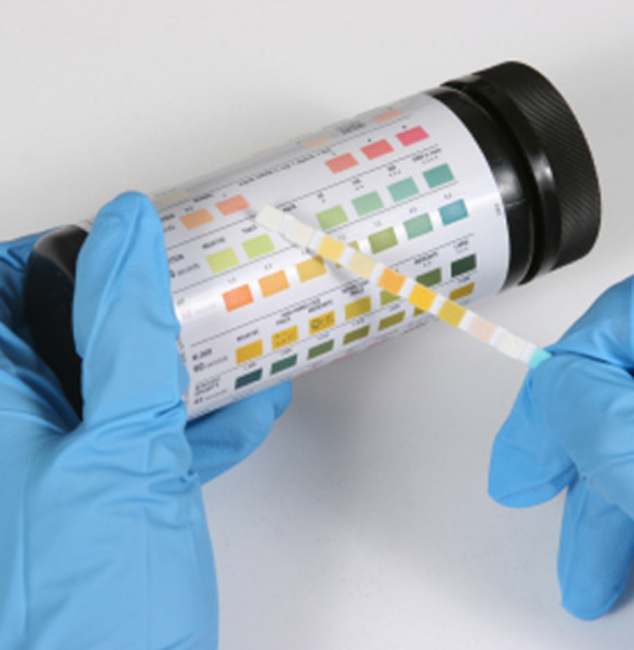Taking the piss: the art of taking urine samples from pets
The urinary system is one of the most important aspects of the body: it’s the main way that the body removes toxic metabolic by products. If the system goes wrong, serious illness and death can rapidly follow: kidney failure is common in dogs and cats. And there are many other illnesses that involve the urinary system. Examples include cystitis (inflammation of the bladder) and hormonal disorders (such as diabetes).Furthermore, a wide range of illnesses can affect the composition of the urine, with urine tests providing key information for making the diagnosis (for example, some types of liver disease).
Urine tests: what do vets check?
This is the reason why urine tests are often a central part of the “minimal database” that veterinary experts recommend as part of a basic work up of a sick pet. There are four key aspects of urine that are tested:
Specific gravity
Dipstick – a chemical stick test to measure aspects such as pH, protein levels, glucose, and others
Sediment examination – to check for cells and crystals in the urine
Bacterial culture and sensitivity
It’s all very well for a urine sample to be requested, but often it’s tricky to collect it. After all, a dog can’t be sent into a cubicle with a request to fill it on demand.
How is the sample physically collected from the animal?
There are three main ways to collect a urine sample:
Ask an owner to get one at home. The simplest method is to use custom-designed urine collection kits, with small collection bowls on the end of a handle, allowing the owner to slip this under the dog at the crucial moment, transferring the urine into a sterile collection pot afterwards. Alternatively, I suggest that an owner uses a small plate: a couple of teaspoonfuls of urine is all that’s needed. For cats, it’s worth using special inert cat litter, which is designed not to absorb cat urine. Once the cat has used the litter tray, the urine can be siphoned off and transferred to a urine sample pot
Collect a urine sample at the clinic from a dog using a urinary catheter. If an owner is unable to collect a sample from a dog, passing a plastic urinary catheter at the vet clinic may be needed. Sedation is sometimes necessary, but in a relaxed, well-behaved male dog it’s often possible to pass a well-lubricated urinary catheter quickly and easily. It’s trickier with a female dog, but with practice, it can be straight forwards enough once the correct technique and equipment is used.
Collect a urine sample at the clinic from a cat using cystocentesis. This involves holding the cat gently and firmly while a syringe and needle is used to collect urine directly from the bladder. The idea of sticking a needle straight into the cat’s abdomen may sound uncomfortable (none of us would like that to be done to ourselves), but most cats tolerate this procedure without wriggling, suggesting that any discomfort must be minimal. It’s a safe procedure and it allows a sample to be collected in the most sterile, uncontaminated way, so it’s ideal for situations where urine culture is planned.
Cystocentesis can also be used in dogs, and is the ideal way of avoiding contaminants when culture is planned, but it can be trickier than in cats. Ultrasound guidance is the optimal way of collecting such a sample.
Urine collection is an important skill for owners – and vets – to accomplish.
Nobody enjoys doing it, but the information that urine can provide is worth all the chasing dogs with plates, inserting tubes into them and poking needles into cats.


